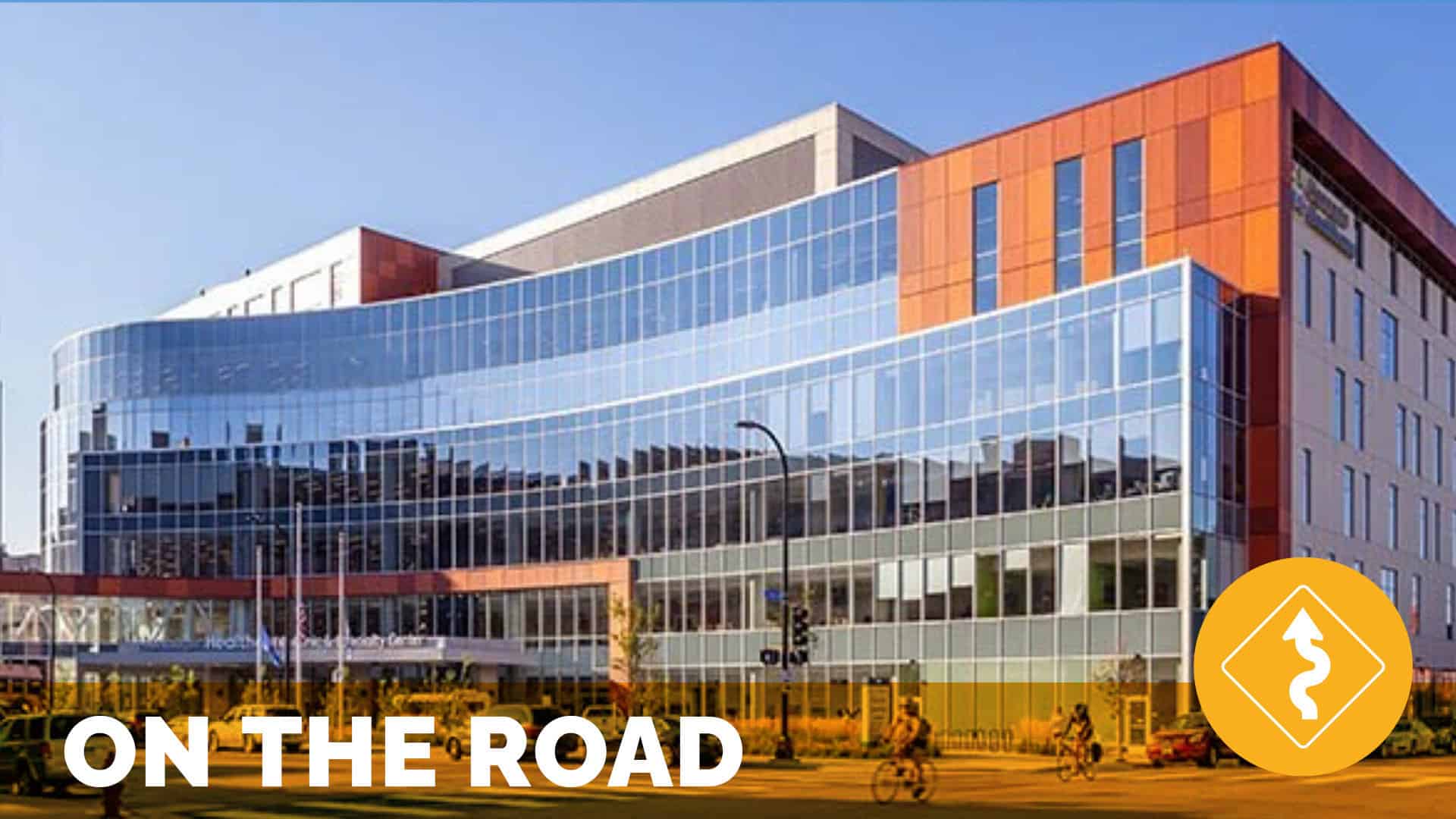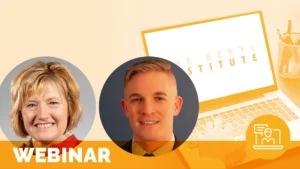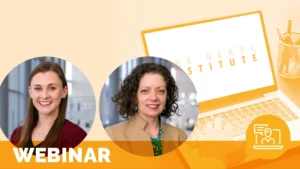Meeting People Where They Are – The Essential Power of Serving Those with the Greatest Needs

On the Road with Hennepin Healthcare – January 2020
by Jason A. Wolf, PhD, CPXP
My latest On the Road visit brought me to a place deeply rooted in its community, storied in history, focused on service and committed to those with the greatest needs. At Hennepin Healthcare I was honored to meet team members, patients and family members who truly personified the idea that at the heart of healthcare we are human beings caring for human beings. Their actions and efforts, their purpose and commitment all reinforced what remains right and good about healthcare. My visit took me to the front lines of care to celebrations of excellence, with voices from across the spectrum of care sharing their perspectives. What stood out at the beginning and was reinforced time and time again during my visit was the true passion that the people of Hennepin had for their endeavor to serve the community in which they lived. It was a palpable example of the service to others rooted at the heart of all healthcare institutions and especially those essential hospitals serving those with the greatest needs.
Walking the Talk
Throughout my conversations, I heard again and again how people reinforced their choice to practice at Hennepin and the pride with which they viewed that commitment. In meeting with key members of the Patient Experience team, including advocates and interpreters, the needs of those served by Hennepin grounded the conversation. One team member offered, “We will always work to recognize the needs of our patients and put those needs first regardless of their background or status.”
Beyond that idea of serving as an Essential Hospital for those in the Twin Cities and greater Minnesota, the team also acknowledges the diverse and rich community in which they find themselves. This requires a vast commitment to listening and understanding and more to ensure that people can communicate in a meaningful way. Through a comprehensive effort at offering translation services with 21 languages spoken on site and over 150 languages available via on-demand support, the team reinforced that putting the patients’ needs first starts with the fundamentals: the ability to communicate, to understand, to be heard. This commitment underlines much of the philosophy in practice I experienced at Hennepin – that they meet people not only where they are but also for WHO they are.
A central effort to support that commitment was to change the conversation and transform how patients and families were engaged, inspired by a very powerful question fostered by the work of IHI and a conversation I shared in my recent Patient Experience Blog. They are now addressing what matters to people and what brings them joy, rather than simply asking what is the matter with them. What brings people to seek care; what motivates and inspires them; and what do they aspire to? In understanding and addressing the human at the heart of the care experience, the team at Hennepin is truly changing the conversation for the people they serve.
It is in capturing these stories that the team brings healthcare to life, establishes relationships of care and works to meet the needs of each and every individual they serve. These stories happen in simple one-to-one moments, in significant and thoughtful displays, such as the Wall of Heroes, that shares the moving stories of people who, in losing their life, have supported the lives of others through donation. Others stories are seen in even bigger and bolder ways through a powerful endeavor in the arts from a family member and patient who captured the story of 24 hours in the life of Hennepin itself. (I will share the story of Anita White and her art further below.)
Designing with the Community in Mind
These ideas of fostering human connection and celebrating the diversity comprising the Hennepin community are no more evident than in the evolution of the Hennepin Healthcare Clinic & Specialty Center that houses their clinic and outpatient services. Designed with the voices of the community in the process, the building and the experience it offers is meant to reflect the community itself. With a sense of openness and access and an environment that represents the diversity that makes up Hennepin, the new structure is much more than just a building.
Through the processes of Experience-Based and Human-Centered Design, the building was designed with the health and wellbeing of both care team members and patients in mind. It also linked the power of clinical process design with the power of the arts to create a space of care and healing that speaks to all who enter it. The building includes over 600 pieces of art, selected by a group of patients, staff, and community members to represent the richness of the community. In fact, every patient exam room has a photograph taken by a patient or employee.
The weaving of process with people was designed with the community in mind and with a sense of creating connection. As Molly Jacques, Senior DirectorSpecialty Clinics, shared, “The opportunity we had in building this place was to reinforce our role in serving the community. We want people to be known, be heard and feel safe.” At the heart of the new building is its signature piece of art, the piece called River of Life by Martin Donlin. Associated with a poem entitled Mirroring the Light by Laurie Allman, it reinforces the very idea of progress and the journey of life and weaves in the diversity that is Hennepin and its community. (You can see a great video introduction to this installation here.)
Allman’s words reflect the tapestry of all I experienced at Hennepin and also provided a frame for what was still to come in my visit. She wrote:
What life this is!
To know that we belong to
such a world and to each other,
whorled galaxies and fingertips,
words in every language
for discovery and for hope.
This journey of discovery and hope were reflected not only in this art and through these words, but also in the actions that the team at Hennepin took to ensure all voices were included and heard. Designing with the community in mind moves well beyond physical space, to the ability to understand and refine essential services as well.
Offering Essential Services
Being an Essential Hospital calls on Hennepin to approach their work with numerous lenses. The organization America’s Essential Hospitals offers this definition: “Essential hospitals provide a substantial volume of care to low-income patients, the uninsured, and others who face social and economic hardships. What essential hospitals do share — and what distinguishes them from other hospitals — is their mission and commitment to care for vulnerable people.” (American Essential Hospitals – What is an essential hospital?)
This commitment to those in need is part of all that Hennepin does. In particular, I was able to see where experience was critically linked to understanding the social determinants of health and population health issues impacting the community Hennepin serves. First, as part of their recent community health needs assessment, they followed an extensive process of listening to the community they serve. Through a human-centered design approach that engaged a range of voices and perspectives, they were able to determine the greatest needs and therefore establish critical priorities for their efforts, not only to address needs for healing in the community, but opportunities to engage in health.
Outcomes from listening to the community and seeing these voices as data was critical to the efforts, as described by Amy Harris Overby, Senior Director of Population Health. She added that the ability to listen and understand needs led to clear priorities, such as a focus on mental and maternal health, and it also reinforced the critical need to ensure culturally sensitive and responsive care.
The fundamental nature of this approach in addressing experience is a key lesson and reinforces the critical linkage of social determinants to experience overall. Part of it comes down to building trust, as Amy offered, “When you ask in a way that makes sense, listen to what people are saying and then act on what they said, you establish a level of trust and opportunity for impact you may not otherwise realize. In addition, when you look to the root issues in the community, you can turn your focus to community health first.” Amy underlined an important point for all addressing the social issues of health and experience overall, adding, “If you move 50 miles upstream, it’s easier to change the course of the river.”
This focus on the community was also seen in the efforts of Hennepin’s top-rated outpatient clinic effort, Positive Care and their Coordinated Care Clinic. This effort supports high utilization patients with a comprehensive and coordinated health encounter and wrap-around services that enable support for both the physical and psycho-social issues that can impact people. By caring for the whole person, they are able to offer services focused on ensuring lasting outcomes. They do this by working hard to connect with those they care for, and as Clinic Director, Fred Ohlerking offered, “creating a place where people truly feel cared for.” While I won’t share all the services offered in the clinic, it is important to note that in a commitment to providing a one-stop shop for all things health and healthcare-related, these clinics are truly meeting people where they are.
Meeting People Where They Are
As part of my visit, I had the opportunity to walk the halls and clinical spaces of Hennepin to talk to nurses and physicians, executives and technicians, and one consistent voice emerged: a commitment to the organization and to the people they serve. Chief of Radiology, Dr. Gopal Punjabi, and his team talked about the importance of how they treat people in each clinical encounter and find new and innovative ways to involve patients in their own care. One example provided by Dr. Punjabi was the commitment to provide people their radiology results as soon as possible after an imaging session versus the typical wait. He offered that in providing people near immediate feedback is not only a positive for patients and their family, but is rewarding and meaningful for those offering that information as well. A simple process innovation that brings people back to the fundamentals at the heart of healthcare itself. This is providing care and service that is meaningful to patients when they want it and are ready for it.
As I walked the halls of the inpatient units, I was also able to meet a nurse manager, Betsy Grover, who also underlined the importance of being aware of those she leads, of caring for those who provide care as part of ensuring the best in experience. This is managed not only through regular shift huddles at the unit huddle board, but in creating the space for those in staff to also know they are supported. As Betsy shared, “We support our staff, we acknowledge their needs, in fact I have a chair in my office open for anyone who wants to come and talk or even just sit. We need to give them that space as well.” That is meeting people where they are.
I was also honored to attend an opening of a new art installment being unveiled at the 2019 Medical Staff Meeting. This is where I met Anita White who I mentioned above. Her work, “A Day in the Life of Healing at Hennepin Healthcare” (presented the perspectives Anita had about the people who impacted her as a patient, team members who she saw as contributing to the spirit of Hennepin Health and the community it serves. Anita’s art honored all that a complex system of healthcare has to tackle each day and the way in which it impacts and is experienced by the people it serves. As Anita shared with me, her art is a way of elevating all that is good, of expressing appreciation and of helping people see themselves through the impact they have on others. Her series of pictures were not just static visuals, but each a story unto itself, with words, sites and situations that expanded the very dimensions that comprise all healthcare does.
Anita’s presentation of seeing people for who they are was echoed in words shared by Dr. Scott Davies at the Medical Staff Meeting. He said he chose Hennepin to practice, and he has stayed at Hennepin for his career because of its purpose and its cause. This comment took me back to the essence of all I was introduced to when I started my visit. He offered, “The power of Hennepin is we see the person and treat them first, then we figure out the rest.” This underlines the very value at the heart of Hennepin’s commitment to caring for the community it serves: that no person deserves less than another and all should be cared for as the person before. That is meeting people where they are.
In concluding my visit, I recalled something shared by my host Sheila Delaney Moroney, Senior Director and Patient Experience Officer, that represented the very essence of all I experienced at Hennepin. She offered, “Places that do best wrap their arms around people literally and figuratively. At Hennepin we want people to get patient care, not just patient management.” You cannot help but feel that as you walk the halls. In an environment committed to caring for those with the greatest needs, I believe I was able to see the biggest hearts. That is meeting people where they are, and I remain honored to have met the people of Hennepin Healthcare.
Thank you to the entire team at Hennepin Healthcare for your welcome and generosity in sharing your story.
Related content
-
 Culture & Leadership | Staff & Provider Engagement
Culture & Leadership | Staff & Provider EngagementMoving from “Good to Great”: Enhancing the Human Experience in Outpatient Care
Join us for an insightful webinar on Hartford HealthCare’s “Good to Great” (G2G) initiative, a transformative approach designed to improve patient experience across the organization. Launched in 2023, G2G uses a data-driven methodology to analyze patient experience and colleague engagement, identifying units as low-, middle-, or high-performing. Focusing on middle-performing teams, this initiative leverages strong
Learn more -
 Culture & Leadership | Quality & Clinical Excellence | Staff & Provider Engagement
Culture & Leadership | Quality & Clinical Excellence | Staff & Provider EngagementRemediation Strategies to Reduce Shame and Stratify Support for Providers in Patient Experience
This webinar will review evidence regarding remediation of communication skills in healthcare providers, shame in healthcare, and how the two intersect. The experience at our institution includes two pilot programs designed for providers and entire clinics with suboptimal patient experience scores. We will present stepwise strategies, lessons learned, and qualitative and quantitative data that are
Learn more -
 Culture & Leadership | Infrastructure & Governance | Quality & Clinical Excellence
Culture & Leadership | Infrastructure & Governance | Quality & Clinical ExcellenceHealth Equity: The Metronome for Human Centered Care
HEADLINER – 2pm ET / 1pm CT / 12pm MT / 11am PT – As the healthcare landscape continues to evolve, and as consumers seek a more personalized care experience, integrating health equity into experience management emerges as a critical factor in enhancing institutional performance. Traditionally, health equity has been viewed as a separate component
Learn more
